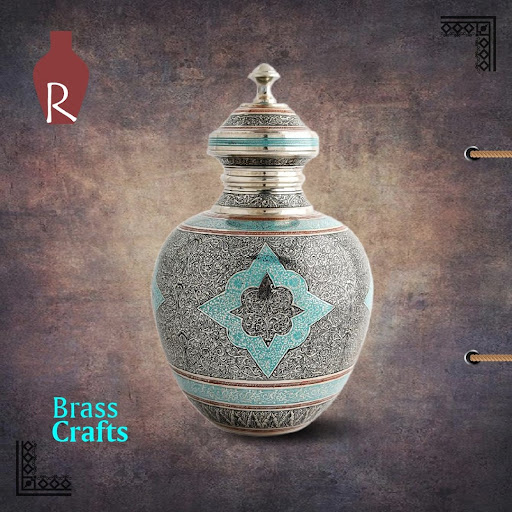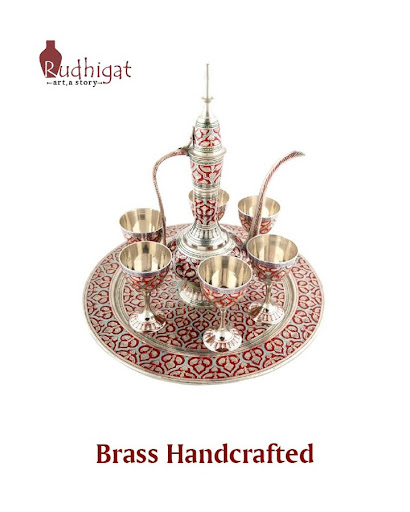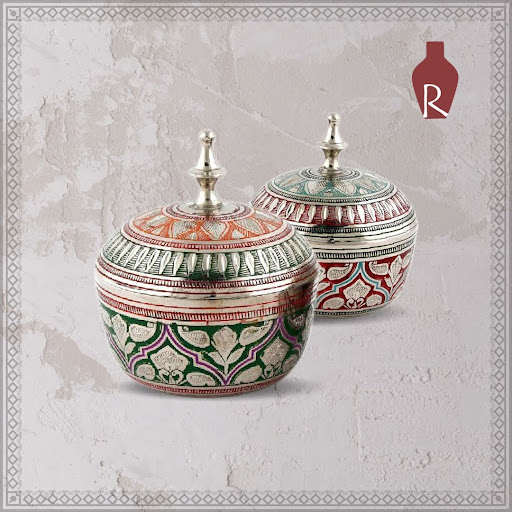A Deep Dive Into the World of Brass Handicrafts

India is a dynamic, culturally varied nation that has long preserved its roots via its wonderful arts and crafts. The handicrafts perfectly reflect the history and present of every Indian state, which is why we can say how diverse and talented our ancestors were with handicrafts and how intricately they practiced every artwork.
Both the Mughals and the Britishers valued brass craftsmanship. Brass is an end-metal made from a mixture of copper and zinc alloy. Artisans mix these two elements in different ratios and produce a large range of brass. Brass has a beautiful hue similar to gold.
Our history is witness to the fact that the discovery of metals has always made our lives easier than ever. Different types of metals are used by us in our day-to-day life in various different ways. The tasks that seemed difficult to complete by us previously can be attained easily in these recent times.
A brass handcraft is the epitome of outstanding and regal utility. The ancient artisans who created some of the fascinating decorations and useful objects are responsible for the existence of brass items today. Due to the fact that brass alloys are made of pure metals like copper and zinc, they are strong and durable.
Brass crafts are renowned for their exquisite craftsmanship and stunning patterns. A few of these imaginative brass handicrafts were used in temples, palaces, religious buildings, and royal houses in addition to being used by common people on a daily basis. The motifs in these crafts were so alluring that the monarchs started putting them on their clothing, jewels, personal adornment, and crowns as symbols of their power and control.
Advantages of using brass handicrafts
In terms of use and quality, brass is one of the metals that has come out on top. Copper is one of the preferable metals on our planet earth, which is combined with zinc to form this metal alloy. The mixture of copper and zinc makes the brass metal an anti-corrosive.
The usage of brass has increased significantly over the past decade in various different products, including industrial machinery, household goods, and other utility items. Exceptional qualities like high durability, weather resistance, etc., make the brass a perfect metal to work on for creating handicraft objects.
Being a mixture of copper and zinc, brass has made scientists claim that the electroplating on it is what makes it one of the superior choices of all other metals since it prevents any coating that can possibly lead the metal to rust or corrosion in upcoming years. This feature of brass has made it the best metal to be used in industrial uses like textile industries, home decor, handicraft items, etc. Besides that, brass is so popular because of its strength, easy-to-use feature, and low maintenance costs.
Types of Brass Handicrafts from Different Corners of India
1. Jaipuri Handicraft
Rajasthan has always been the hub of our Indian handicrafts, whether it is the blue pottery handicraft or the block printing handicraft, Rajasthan has always been the one where India’s ancient art forms have been practiced for many decades. Being ahead in all other Indian art forms, how can Rajasthan be not ahead in terms of brass handicrafts?
Rajasthan’s Jaipur city is considered the hub of brass cravings and lacquering. The brass handicrafts like pots, flower vases, glasses, utility boxes, etc., manufactured in Jaipur are beautifully crafted and decorated with different detailed designs. Jaipur is also very popular for an art form that is made by coating one metal onto another metal, and this art form is known as Koftagiri.
2. Moradabad Handicraft
Moradabad is a city in the Indian state of Uttar Pradesh. The Moradabad city is well-known for its brass household items. The minute detailing and intricate designs are responsible for the popularity of these brass handicrafts.
Another city in Uttar Pradesh, well-known for its brass handicrafts, is Varanasi City (previously known as Banaras). The city houses many Hindu temples, and as a result, Varanasi is popular for its deity sculptures that are crafted from brass. Along with these deity sculptures, the brass household items are equally fascinating.
3. Kamrupi Handicraft
The Kamrupi handicraft got its name from the city name where it is practiced the most, the Kamrup city located in the state of Assam. The Kamrupi brass handicrafts are made from a mixture of brass and bell metal (AKA bell bronze).
Brass items like lota(waterpot), vaati(bowls), Kalah(pots), cymbals(musical instruments), etc., are highly popular Kamrupi brass items.
Other than brass and bell bronze, the Kamrupi brass handicrafts are also made by mixing some proportions of silver, copper and gold as well. Kamrupi handicrafts are so mesmerizing that even Assam’s state museum is the house of these handicraft items.
4. Bidri Ware
The Bidri ware brass handicraft finds its roots in the Indian state of Andra Pradesh. The Bidri ware items are also made with the copper and zinc mixture, but the silver and gold coating is what makes the Bidri ware unique from all other brass handicrafts.
Just like the Kamrupi brass handicraft got its name based on the city name where it is practiced, the Bidri ware too got its name from the Indian city name where it is practiced the most, the town of Bidar of Andhra Pradesh’s Karnataka city.
5. Dhokra Handicraft
The earliest metal statue of the Dancing Girl that was discovered from the lands of Mohenjo Daro depicted the Dhokra metal artwork. Surprisingly, the Dhokra brass artwork is still well-known and well-practiced even today in the south-eastern Indian states, i.e., Andhra Pradesh, Orissa, and Madhya Pradesh.
The brass used in Dhokra handicrafts is usually made from scraps of bronze, and its interiors are stuffed with clay. Statues of animals, birds and other religious deities are created in this Dhokra handicraft.
From Rudhigat
As we know, India is a perfect blend of talent, knowledge and culture. Even in this electronics-driven digital era of the 21st century, Indian artisans have still not forgotten to explore and spread their talent and love for art all around the world.
Today when everyone is stuck to their electronic devices and gradually forgetting about our Indian culture and artistic talent, Rudhigat is bringing mesmerizing art forms to you straight from the hands of highly talented artists.
















